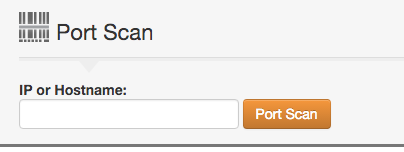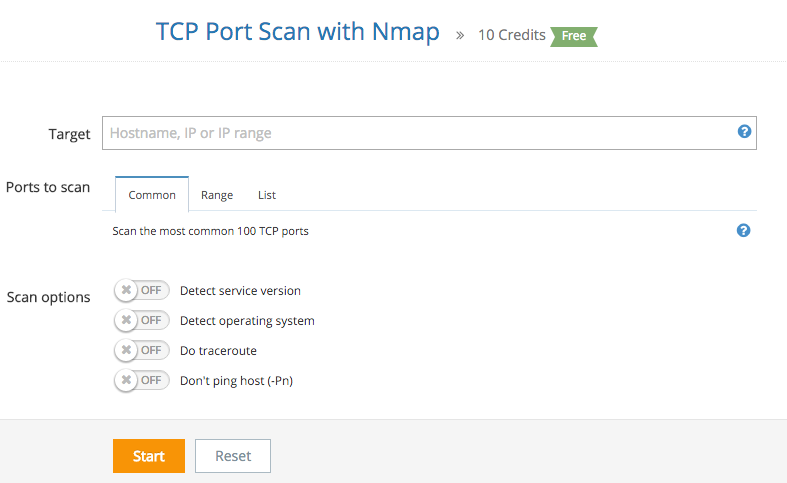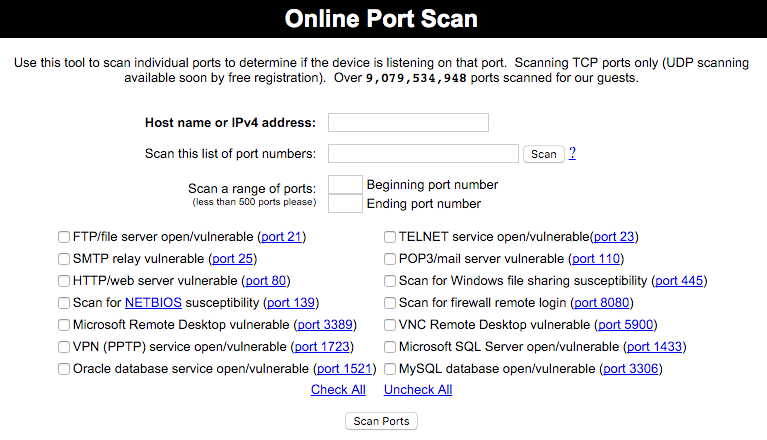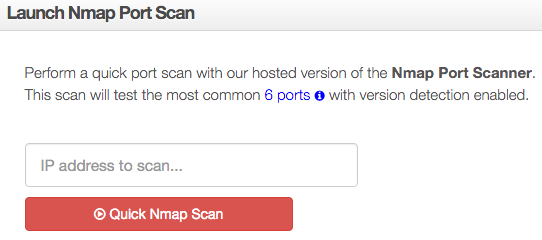7 online scanners to search for open ports on the server
From the translator. Hi, today I want to publish a translation of an article with a list of services that will help find open ports on servers. I hope that the article will be useful.

If you host your web applications on an administered server or shared hosting, then you have nothing to worry about. However, for a virtual or dedicated server, you must provide all the possibilities for the security of your server.
Having unwanted ports open is a bad idea from which an attacker can benefit in many ways.

Below are free online services that help you find out if ports are open so you can check and block them if they are not being used.
')
Note: if you run the port scanner for your site’s DNS, and it is behind a proxy such as CloudFlare or SUCURI, then it may not provide accurate information. Use the real IP address of the server.
MX Toolbox tries to check the 15 most frequently used ports with a timeout of 3 seconds and returns results which of them are open and which are not.

Pentest Tools checks open ports using NMAP on the target host. You can choose the definition of the operating system and the version of the service.

It will give you the results for open ports and will offer to save scan details in PDF format.

This tool is a personal Javier Yanez project that allows you to scan ports for IPv4 and IPv6 addresses for free.

Scans one or a range of ports that a server with the specified IP listens on. This is useful if you only want to scan selected ports.

Performs a quick scan of the six most common ports (FTP, SSH, SMTP, HTTP, HTTPS, RDP) with the NMAP port scanner.

Scan about a thousand frequently used ports using NMAP or specify your ports for your domain or IP.

Quickly scans some common ports, such as FTP, SMTP, DNS, Finger, POP3, SFTP, RPC, IRC, IMAP, VNC, etc.

I hope the above tools will help you find open ports on your domain or IP. Use a firewall to allow the use of the necessary ports and ignore the rest.
You may also think about changing the default port for SSH, as shown here .
PS All projects of the Hosting Cafe went to work through the https protocol :
Thank you egorcompany for the picture.

If you host your web applications on an administered server or shared hosting, then you have nothing to worry about. However, for a virtual or dedicated server, you must provide all the possibilities for the security of your server.
Having unwanted ports open is a bad idea from which an attacker can benefit in many ways.

Below are free online services that help you find out if ports are open so you can check and block them if they are not being used.
')
Note: if you run the port scanner for your site’s DNS, and it is behind a proxy such as CloudFlare or SUCURI, then it may not provide accurate information. Use the real IP address of the server.
MX ToolBox Port Scanner
MX Toolbox tries to check the 15 most frequently used ports with a timeout of 3 seconds and returns results which of them are open and which are not.

TCP port scanner with Nmap
Pentest Tools checks open ports using NMAP on the target host. You can choose the definition of the operating system and the version of the service.

It will give you the results for open ports and will offer to save scan details in PDF format.

Online Port Scanner
This tool is a personal Javier Yanez project that allows you to scan ports for IPv4 and IPv6 addresses for free.

Port Scanner from T1 Shopper
Scans one or a range of ports that a server with the specified IP listens on. This is useful if you only want to scan selected ports.

Port scanner from Hacker Target
Performs a quick scan of the six most common ports (FTP, SSH, SMTP, HTTP, HTTPS, RDP) with the NMAP port scanner.

In cloak
Scan about a thousand frequently used ports using NMAP or specify your ports for your domain or IP.

Port Scanner from DNS Tools
Quickly scans some common ports, such as FTP, SMTP, DNS, Finger, POP3, SFTP, RPC, IRC, IMAP, VNC, etc.

I hope the above tools will help you find open ports on your domain or IP. Use a firewall to allow the use of the necessary ports and ignore the rest.
You may also think about changing the default port for SSH, as shown here .
PS All projects of the Hosting Cafe went to work through the https protocol :
- https://vds.menu
- https://shared.menu
- https://dedicated.menu
- https://license.menu
- https://backup.menu
- https://https.menu
Thank you egorcompany for the picture.
Source: https://habr.com/ru/post/281943/
All Articles